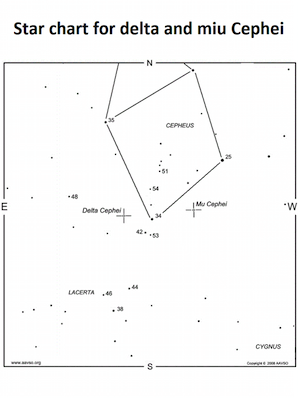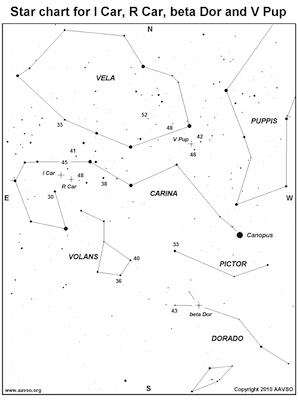 Stars brighten our skies every night and cause us to dream about what might be out there! They differ in color, size and distance, however, they also vary in brightness. This project is great for observers who love looking at the stars, identify constellations and use them to find special stars that change in brightness! Observe one single star over a number of days, months or weeks and skywatchers will notice that it will brighten and dim in comparison to near-by stars.
Stars brighten our skies every night and cause us to dream about what might be out there! They differ in color, size and distance, however, they also vary in brightness. This project is great for observers who love looking at the stars, identify constellations and use them to find special stars that change in brightness! Observe one single star over a number of days, months or weeks and skywatchers will notice that it will brighten and dim in comparison to near-by stars.
In this project, AAVSO (American Association of Variable Star Observing) and AWB will help you identify known variables and coach you through observing them over their known cycle (from the brightest magnitude to the faintest magnitude). Once mastered, AAVSO is looking for observers to help them collect data to add to a database that is used by professional astronomers in their knowledge of variable stars.
There are a number of reasons why variable stars change their brightness. Pulsating variables, for example, swell and shrink due to internal forces. An eclipsing binary will dim when it is eclipsed by a faint companion, and then brighten when the occulting star moves out of the way. Some variable stars are actually extremely close pairs of stars, exchanging mass as one star strips the atmosphere from the other.
Sounds daunting? First of all, you don’t have to have a degree in physics to detect the brightness changes of the stars. You can contribute to science by making variable star observations. Secondly, you don’t have to purchase expensive equipment to be able to make those observations. It’s true that having a telescope or a pair of binoculars will give you more targets to choose, but you can use your naked eyes and still be able to estimate the brightness of the brightest variable stars. And that is exactly what this first experience is about.
How do you start?
- You have to identify the variable star: there are star charts that will help you with this.
- You have to select two nearby stars (the “comparison stars”), one brighter than the variable and the other one fainter. Those stars will have their magnitudes labelled on the chart and will -of course- not be variable.
- You have to estimate the brightness of your variable star by comparing it with the chosen comparison stars.
- Then you have to determine the actual magnitude of the variable at the time of your observation, keep a record with your result and eventually report it to organizations like the AAVSO (American Association of Variable Star Observers)
Fall (S)/spring (N) into winter/summer we will have two classical cepheids to see:
|
Northern Hemisphere:
Delta Cephei
Found in the constellation Cepheus. Its variation in magnitude (between 3.4 and 4.2) is caused by a regular pulsation in the outer layers of the star. Its brightness will fluctuate in about five days.

|
Southern Hemisphere
I Carinae
Found in the constellation Carina, this cepheid fluctuates between 3.3 and 4.1 magnitudes in about 35 days. It is similar to delta Cephei but more luminous that's why its period is 7 times longer.

|
Click on the image above to download a full page chart.
For detailed instructions, download the Variable Star Guide. Included are both star maps for Delta Cephei and I Carinae.
Tips:
You will have to be patient and observe them every clear night. During April you will watch delta Cephei going up and down several times while l Carinae will slowly fade and rapidly brighten following its 35 d. period.
Having trouble? Use our the AWB Forum. We will be more than happy to give you a hand!








